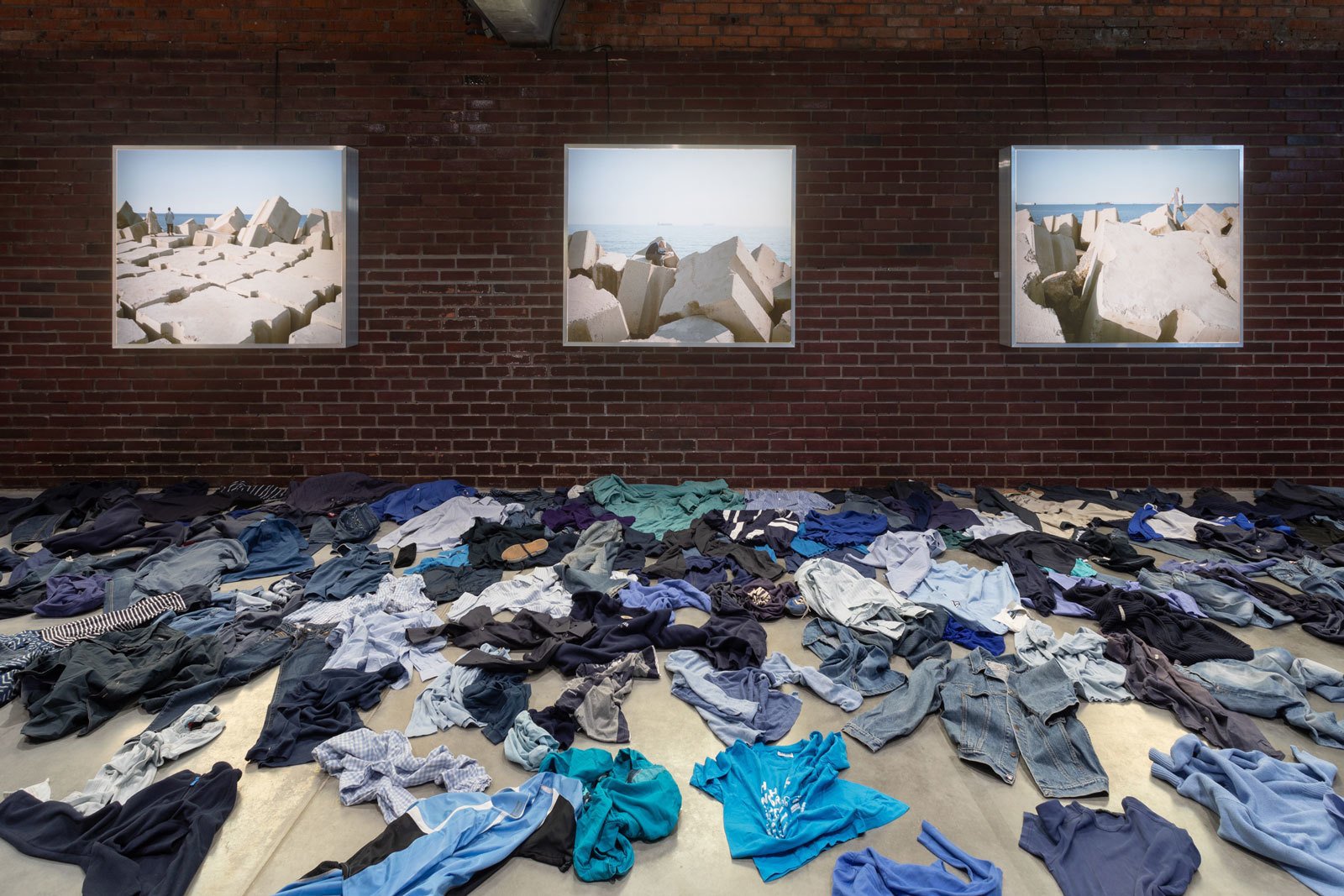Kader Attia
(b. 1970, Seine-Saint-Denis, France; lives and works in Berlin and Algiers)

La Mer Morte, 2015
Installation. Clothes and 3 lightboxes, 130 x 160 x 18 cm each
Courtesy of the artist and Lehmann Maupin, New York, Hong Kong, Seoul
The installation by Kader Attia, a French artist of Algerian origin, combines two works of different periods. The photographs in lightboxes belong to the series Square Rocks (2008) and depict a quay in the Bab el Oued neighborhood of Algiers. Local teenagers gaze dreamily out to sea, but escape is impossible: the cement blocks are piled here deliberately, to prevent any boat, large or small, from mooring. The other part of the installation is located on the floor. Ready-made clothing in shades of blue and azure imitates the sea. This is an ephemeral monument to those refugees who died on their way to Europe. Over the last few years, the Mediterranean sea has become a dead sea or, rather, “the Sea of the Dead.” Thousands of refugees from Libya, where a civil war has raged since 2014, have attempted to reach Italy by crossing the Mediterranean. On July 1, 2018, the number of dead and missing reached one thousand. The war in Libya is a direct consequence of the Arab Spring, a NATO-supported mass movement which aimed to bring about regime change in Arab countries. Malian writer Manthia Diawara considers Attia’s installation to represent the search for a “common place,” as the post-colonial writer Édouard Glissant understood it, a space where nations and cultures meet despite the differences in their origin and biography. Instead of portraying individual victims Attia used jeans and T-shirts, garments worn by refugees and migrants worldwide, as well as by city-dwellers. What they have in common is the search for a better life.